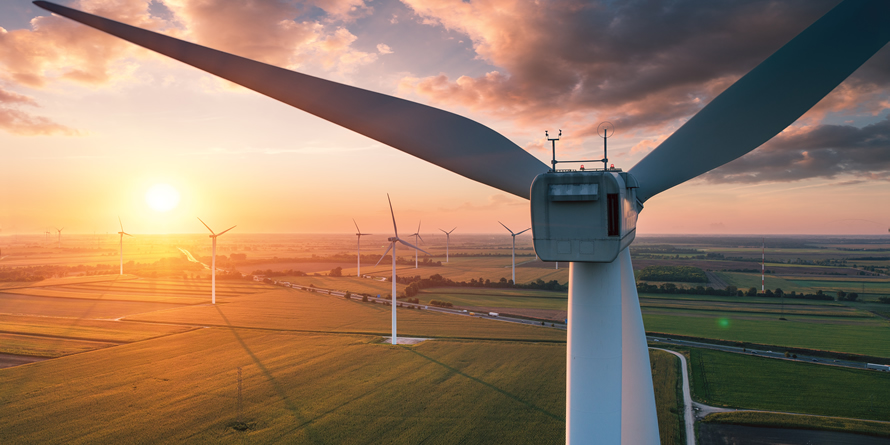Posted on: 03/08/2020
Following the publication of National Grid’s 2020 Future Energy Scenarios, Vice President Sales, James Graham, takes a look at some of the key highlights and reflects on recent flexibility developments that we’ve played a leading role in.
As the UK continues on the path to net-zero, National Grid’s Annual ‘Future Energy Scenarios’ (FES) report helps to provide real insights into where the UK needs to target and affect further change. It also remains a useful reminder that much more needs to be done in order to reach the end goal of a flexible, decentralised and decarbonised energy system.
That’s not to say we should not be proud of what has been achieved so far. Figures show that Q1 2020 (January - March) saw renewables take a record 47% share of generation overall, which represents a new record as the highest ever share. We also saw another record during Q2, with the UK going 67 days and 22 hours without using coal-fired generation for the first time since the Industrial Revolution.
Both of these achievements feed into the very welcome headline from this year’s report that reaching net-zero by 2050 is achievable. This is not without its caveats, including changes to the policy landscape as well as increased societal and consumer engagement, but it is interesting to see that in three out of the four FES, National Grid now see the UK reaching the 2050 target.
In relation to the energy sector, this of course relies on the continued deployment of renewable generation – at least an additional 40GW by 2030 according to the report – as well as the development and implementation of carbon capture and storage in the next 10 years or so in order to enable the power sector to reach net-zero emissions by 2033, some 17 years ahead of the overall goal.
Breaking that down further, National Grid foresee the need for at least 1.4GW of solar and 3GW of wind to be built every year between now and 2050. This will allow for zero marginal cost generation to make up around 71% of generation by 2030 (rising to 80% by 2050). This scale of change cannot be achieved without a variety of solutions supported by government, suppliers, developers, funders and consumers to ensure that the level of investment required to support a decarbonised energy system exists.
We are already finding increasing demand for products such as Corporate Power Purchase Agreements (CPPA) which allow consumers to directly support the deployment of additional new build renewable generation by agreeing long term prices directly with generators.
SmartestEnergy is playing its part here by offering a firming service which gives consumers more predictability over the volume of power they buy under a CPPA. We must also consider the need to embrace the system challenges posed by intermittent renewable generation and to find innovative and cost-effective ways of deploying flexibility at far greater scale than today, something we are already actively working on with our customers.
The market’s reaction to recent high renewable production and low demand scenarios have given us a window into the system challenges this future state could bring. For example, the Balancing Mechanism (BM) which is a short-term market for generation types able to quickly increase or reduce output (such as gas peaking plant or wind curtailment) saw the volume of actions taken in April and May double to around 7TWh year-on-year. We have for some time seen the BM as a key future revenue stream for distributed energy resources and have invested in ensuring our customers can participate.
Since our first dispatch in the Balancing Mechanism in October 2019, we continue to perform at the top of the Balancing Mechanism stack of accepted offer volumes for gas peaking plant, securing added value for our generators.
On top of that, where National Grid need to reduce generation in order to keep the grid in balance, the recently implemented Optional Downward Flexibility Management (ODFM) service provides a new potential revenue stream for assets to turn off when instructed by the System Operator. Notably, ODFM has been extended to run until 25th October, enabling generators to benefit from added revenue before we head into the winter months, and ahead of National Grid introducing a more enduring service. This is again a service that our customers can access via SmartestEnergy.
Against a backdrop of reducing subsidy support and reductions in the value of embedded benefits, independent generators must look to maximise the value of their projects by operating in a variety of different markets which value that flexibility – particularly if we are to meet the deployment targets set out in the FES.
On the other side of the coin, the report also sets out recommendations for consumers. In the Industrial and Commercial sector, increased energy efficiency measures are a must moving forwards in order to reduce power and heating demand, with heating becoming electrified or possibly running on hydrogen by 2050.
Regardless of our individual positions, we each have our own role to play in helping decarbonise the UK economy. As both an off-taker off independent generation and a business energy supplier, SmartestEnergy is uniquely placed to play an important role on both sides of the equation, helping to guide our customers through the net-zero transition.
Click here to see the full Future Energy Scenarios Report 2020

 United States
United States Australia
Australia






